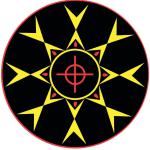-
Content
2 -
Joined
-
Last visited
-
Feedback
0%
About Me
The Bob Buquor Memorial STAR CREST skydiving awards was initiated in 1967 by Bill Newell as a tribute to a friend and mentor, the late Robert H. Buquor. Buquor was one of the best early freefall photographers, and he pioneered structured relative work known as "star formations". It was these early freefall formations that led the way to "mega" formations, sequential RW and most of the other forms of relative work being practiced today.
The STAR CREST awards were formed to recognize relative work skydivers for in-air achievements and to honor the memory of Bob Buquor. Newell's original purpose for forming the STAR CREST awards was to record and preserve for parachuting history the accomplishments of Buquor, and the twenty or so skydivers who had participated in the first 8-way stars. As time passed, and more skydivers became capable of forming 8-way and larger formations, Newell saw no reason not to include them on the "special roster". Thus, the perpetual STAR CREST Awards program was born.
Type of
Accomplished
Relative worker
Combining
Reliability
Enthusiasm
Skill and
Teamwork
Throughout skydiving history the last five decades, the STAR CREST awards have been instrumental in the promotion and development of relative work skydiving worldwide. From the basic SCR to the more progressive skydives, STAR CREST award criteria has retained a certain format - qualifying skydives have to be fun, involve varying degrees of skill and teamwork, and be performed with an average number of jumpers out of readily available aircraft.
The program has grown from the original STAR CREST Recipients (SCR) in 1965, to include the STAR CREST Solo (SCS) in 1971, and Night STAR CREST Recipient (NSCR) in 1971, the STAR CREST Skydiver Award (SCSA) in 1975, and the Night Star Crest Skydiver Award (NSCSA) in 1978. In 1984, the BBMSC introduced the Universal Skydiver Award (USA). In 2002, two new vertical/free fly awards were incorporated into the program; the Vertical STAR CREST Recipient (vSCR), Vertical Star Crest Solo (vSCS) and on the 50th anniversary year of the 1st 8 man star we introduce the HALO Award (HSCR & HSCS) in 2015. In 2019 we launched the Super Nova & Galaxy to complete the USA Trilogy: Universal Skydiver Award: Nova (SCN), Super Nova ( SCSN), Galaxy (SCG).
In 2012 Bill Newell passed leaving his youngest daughter Rachael Newell Machado and her husband John Machado to continue the STAR CREST legacy. Since Bill's passing they've rolled out the HALO, HALO Solo, Super Nova and Galaxy Awards. This July 2022 they will be bringing back the Military X Award to commemorate the 55th anniversary of the world's first 10 man star.



